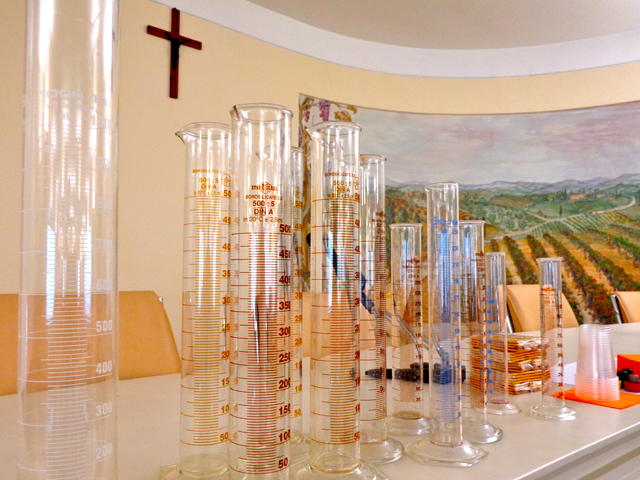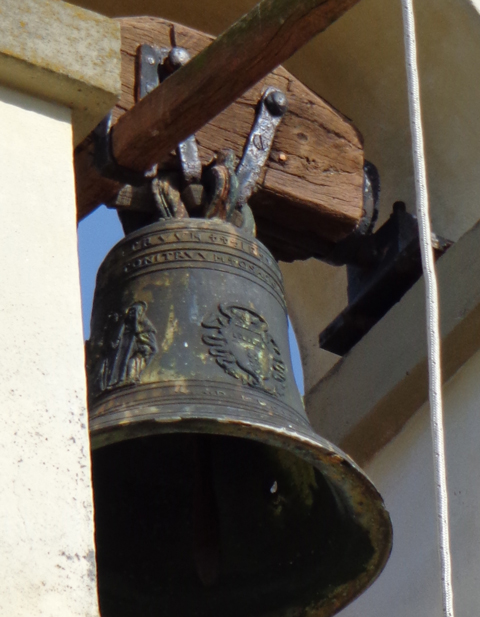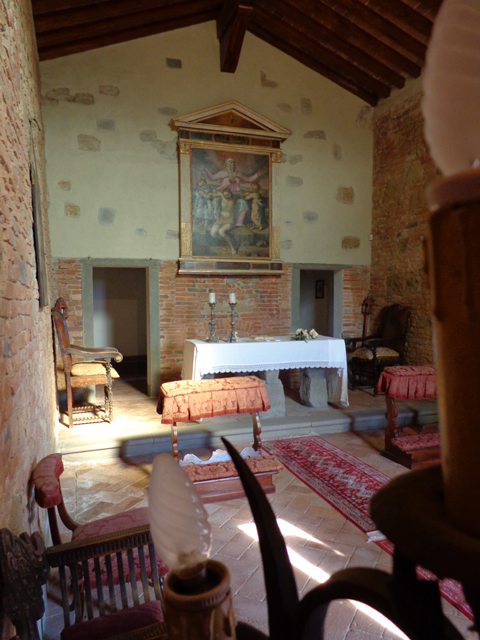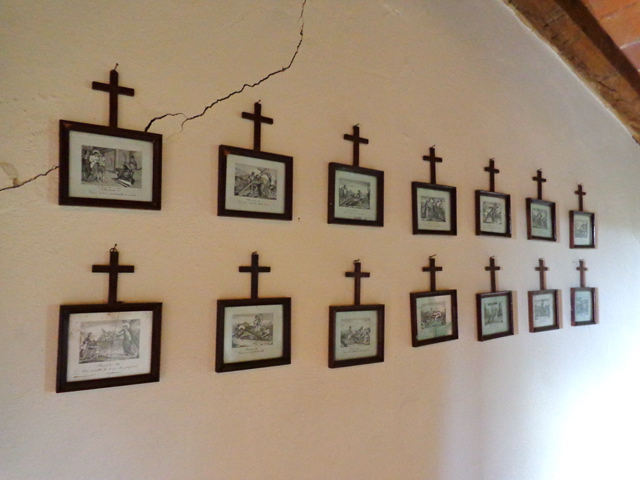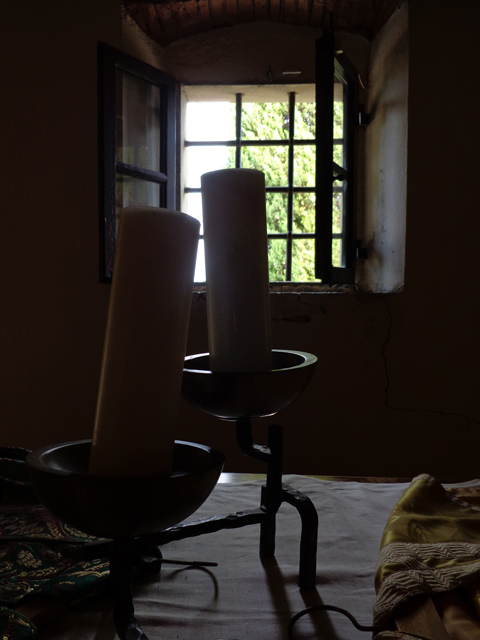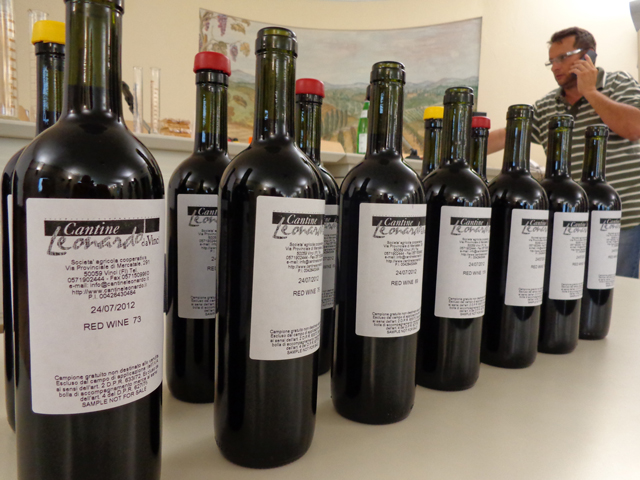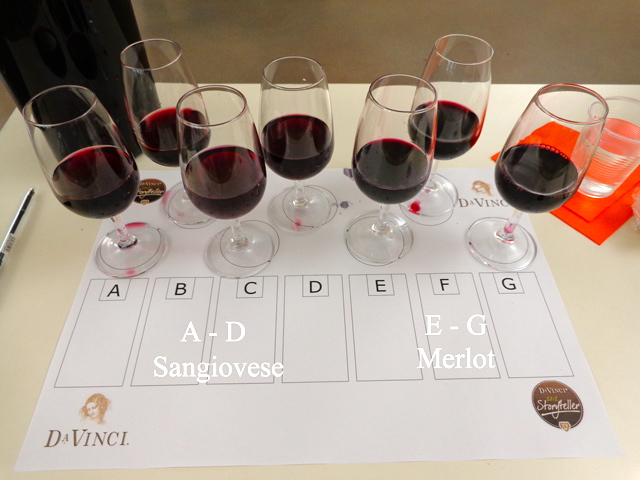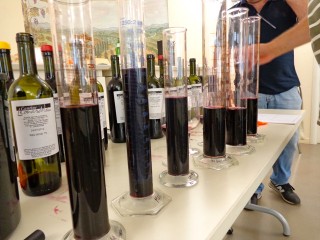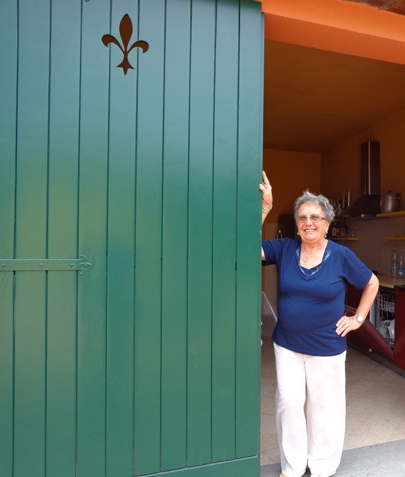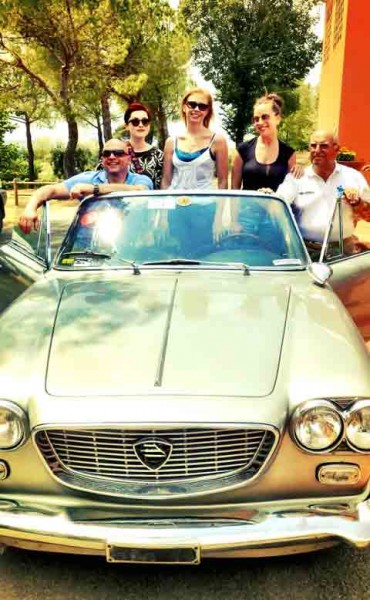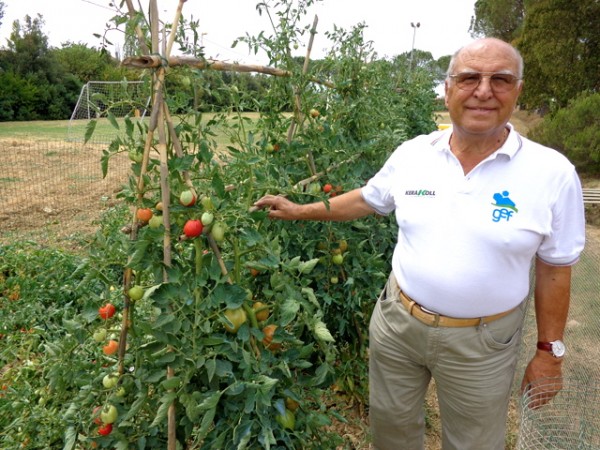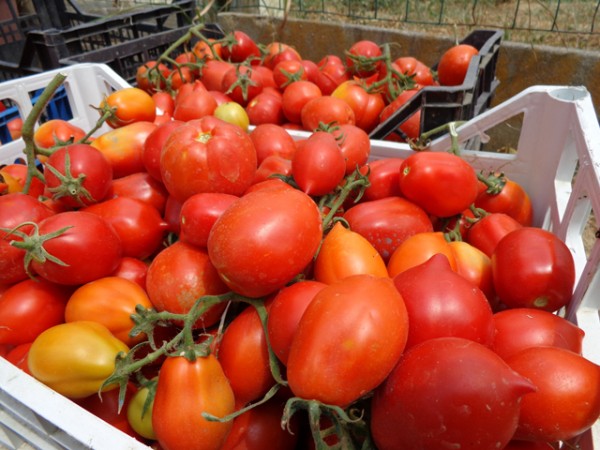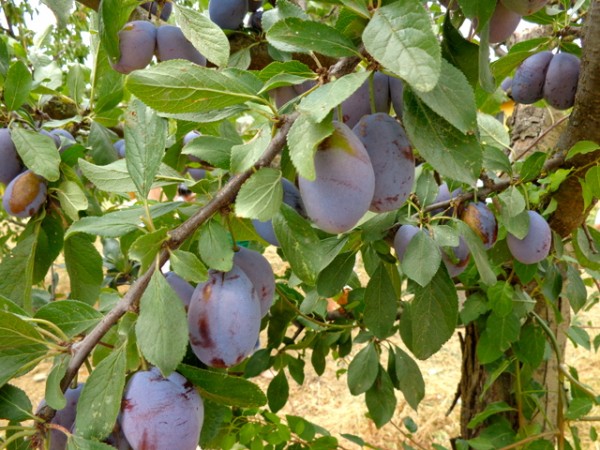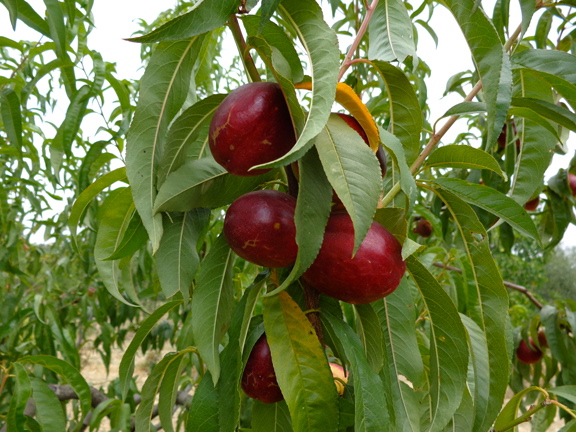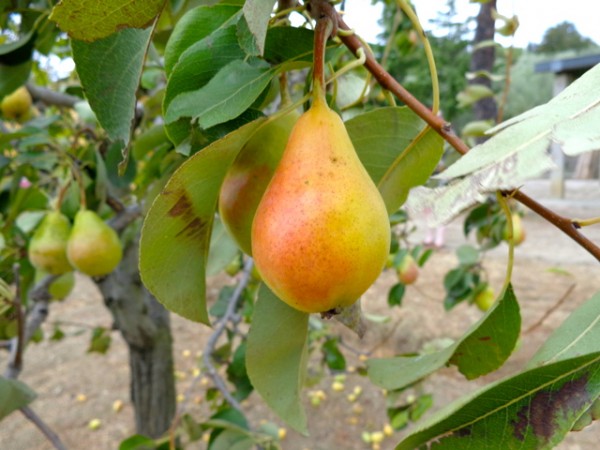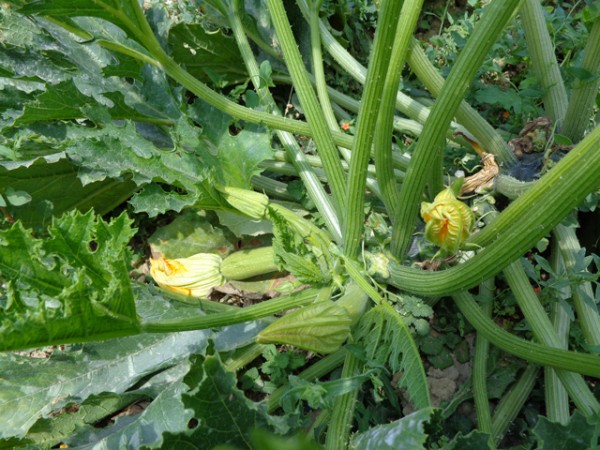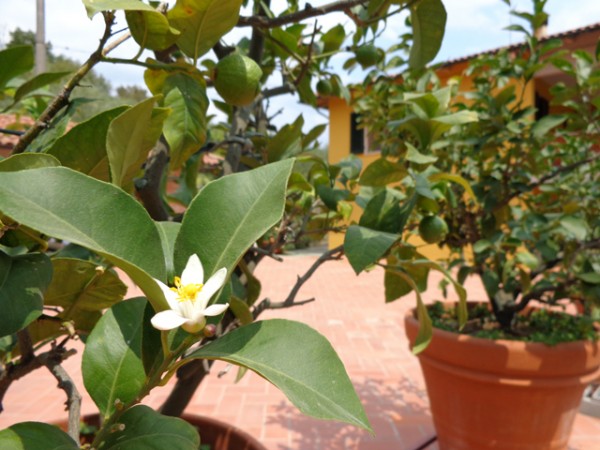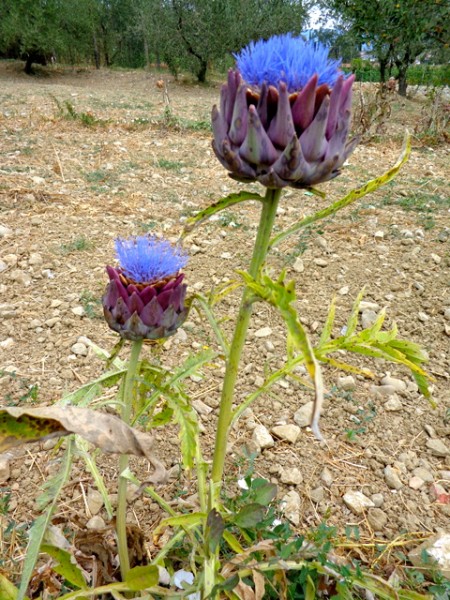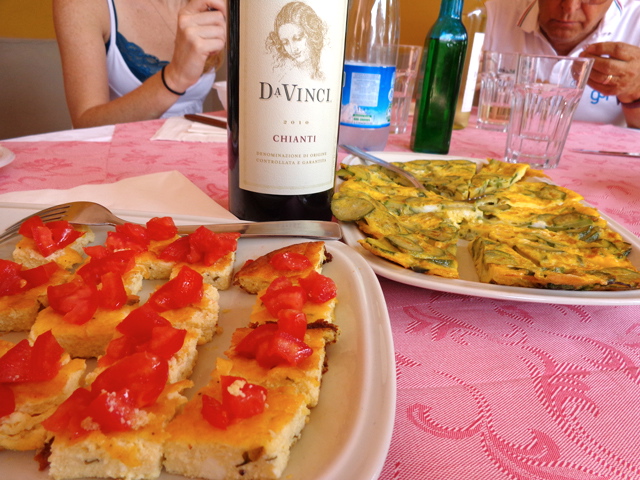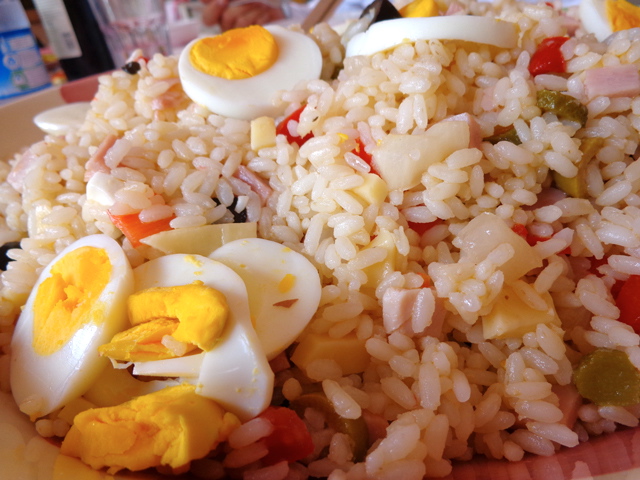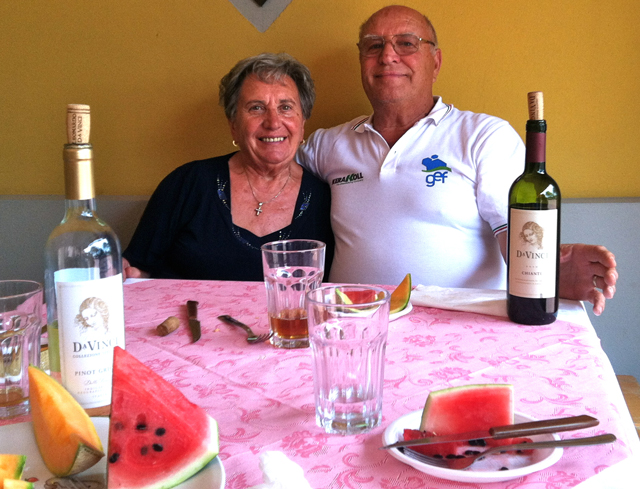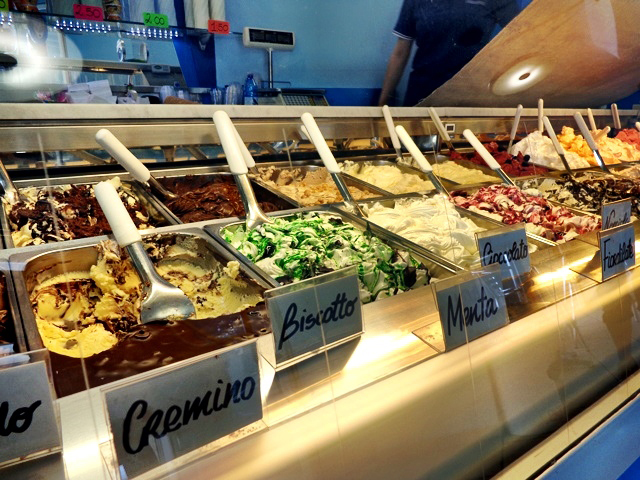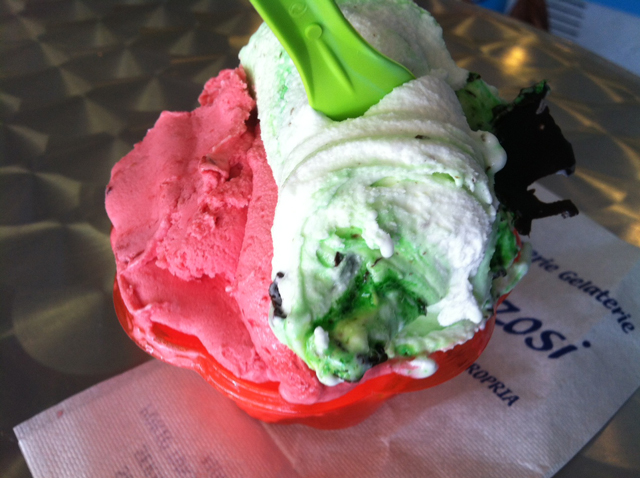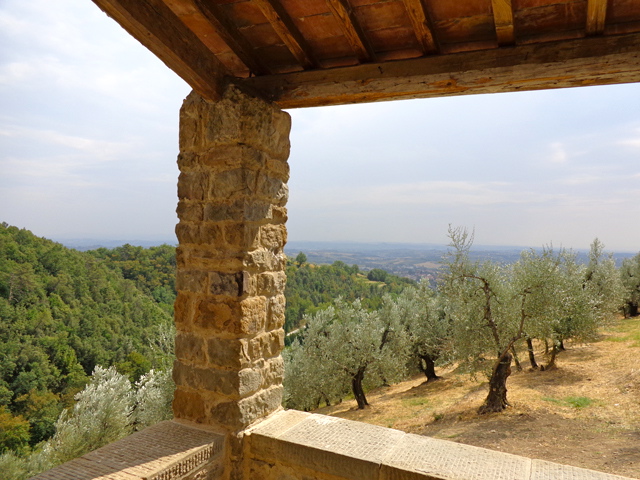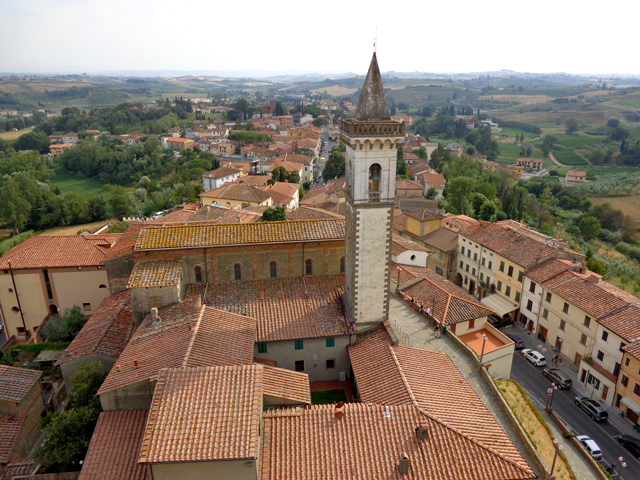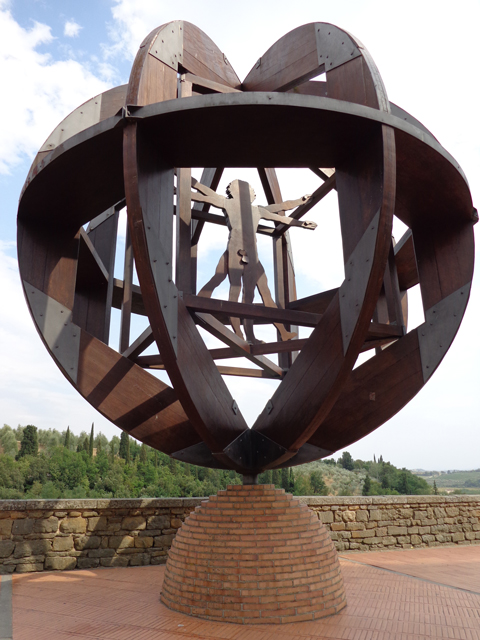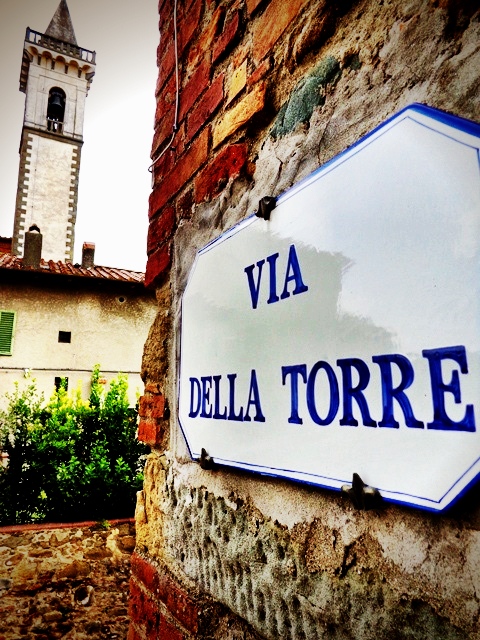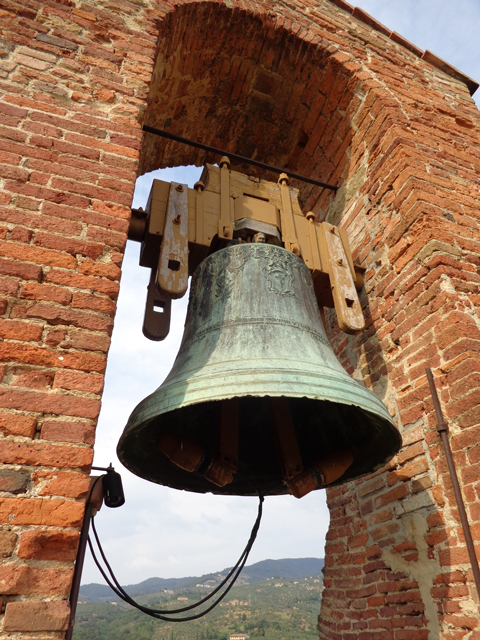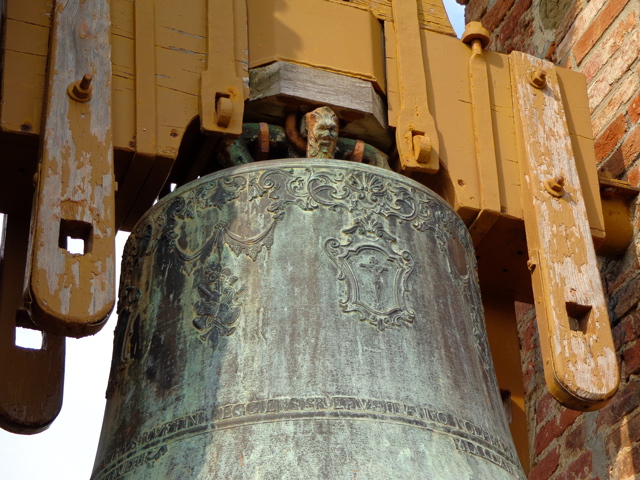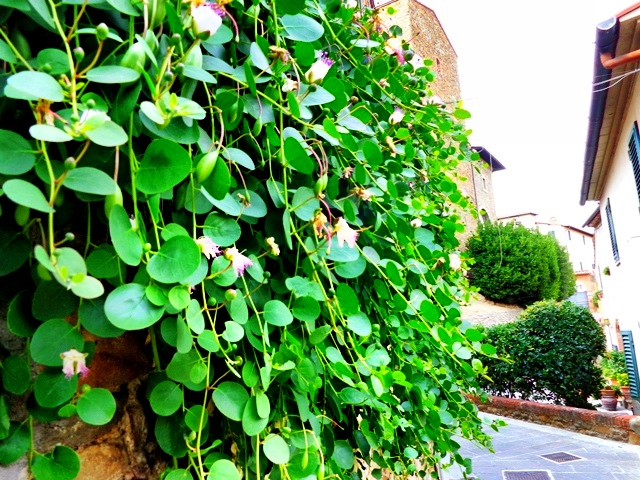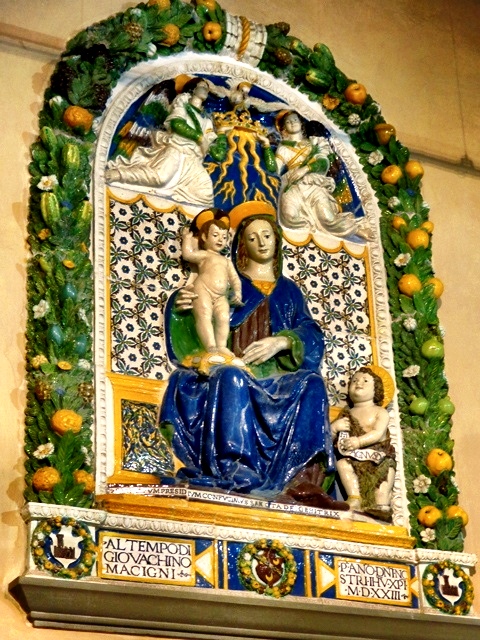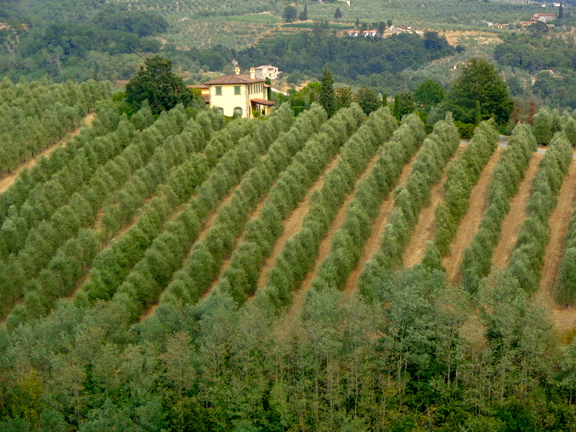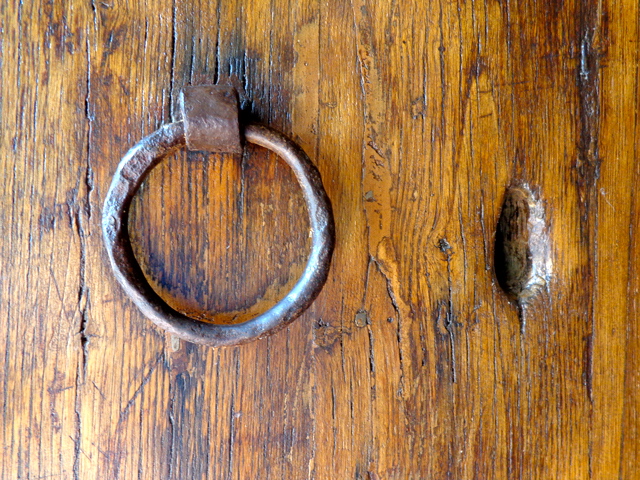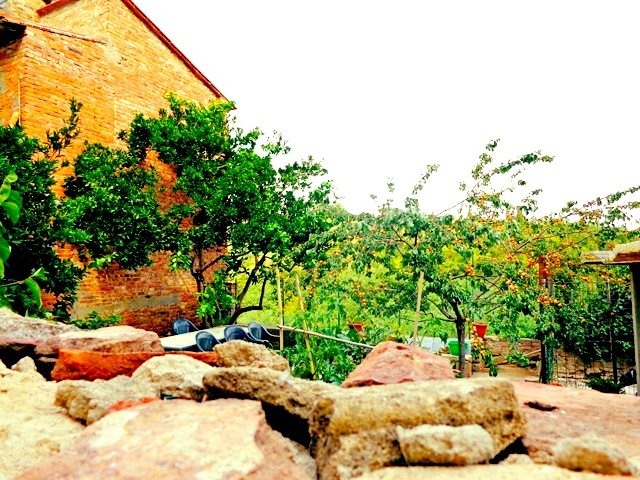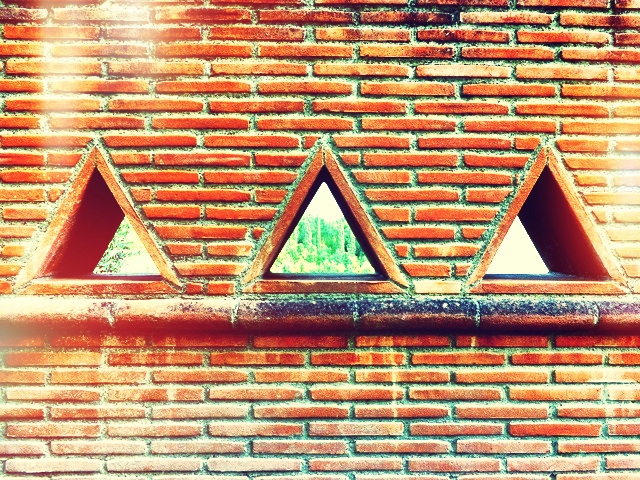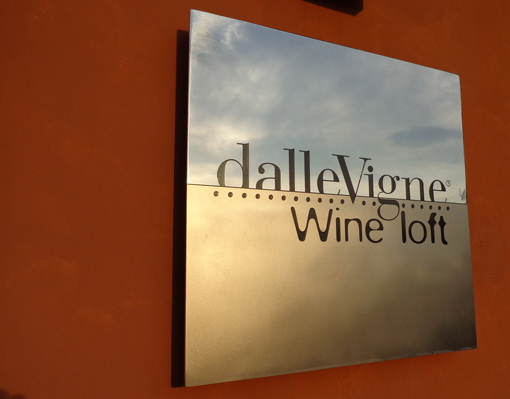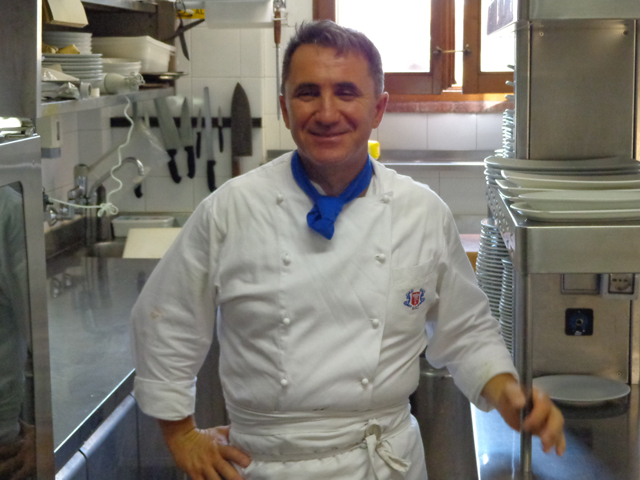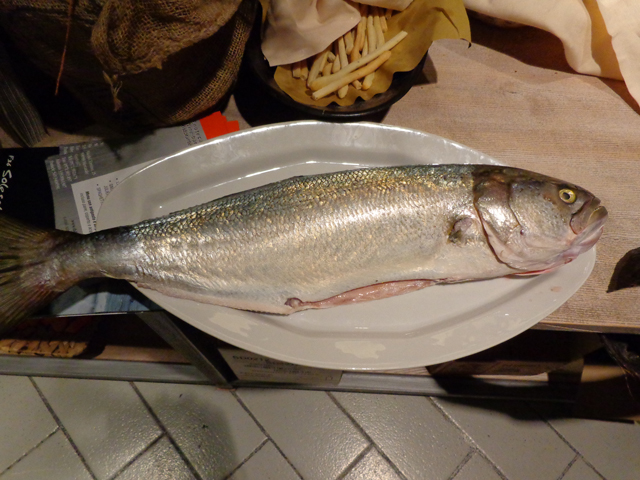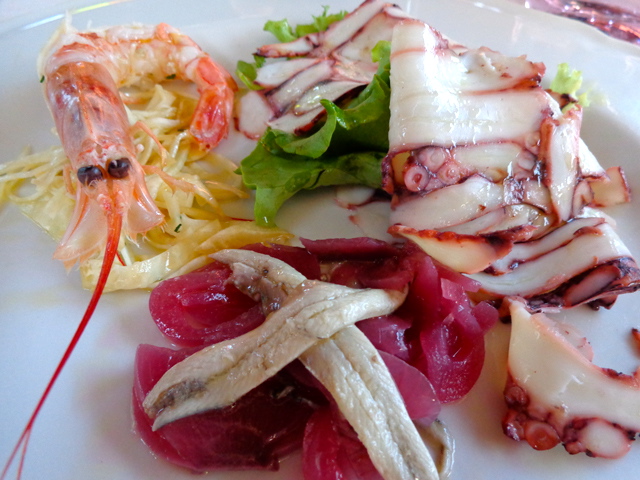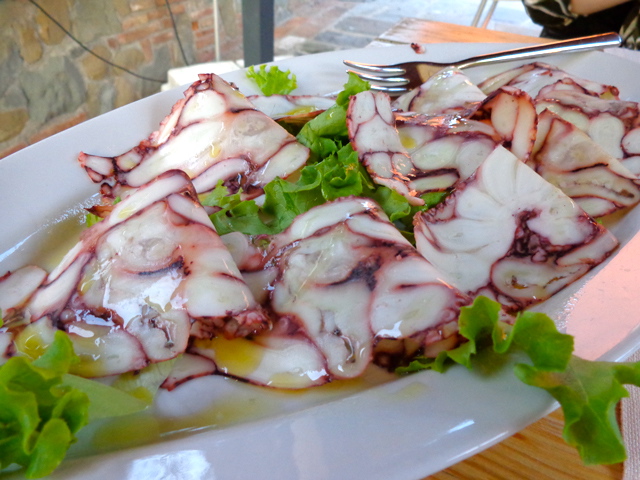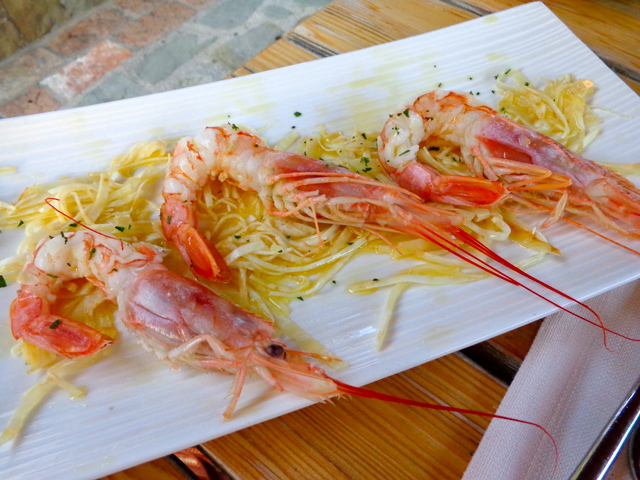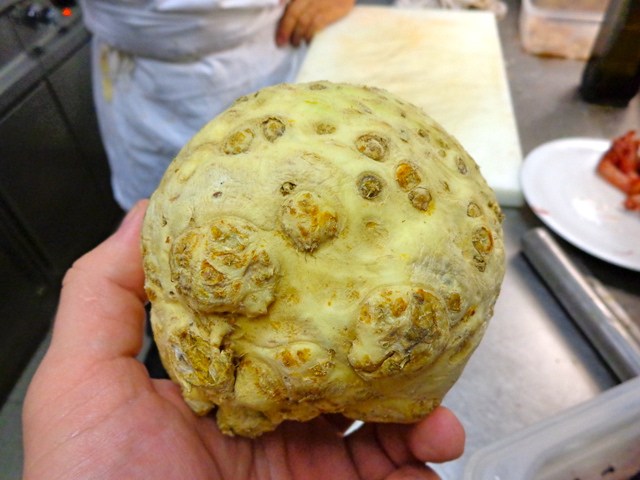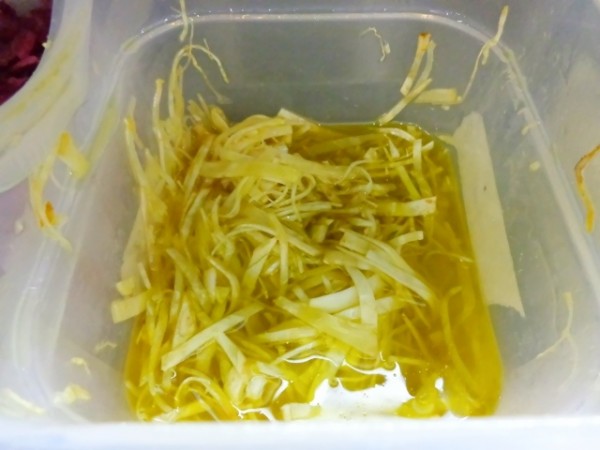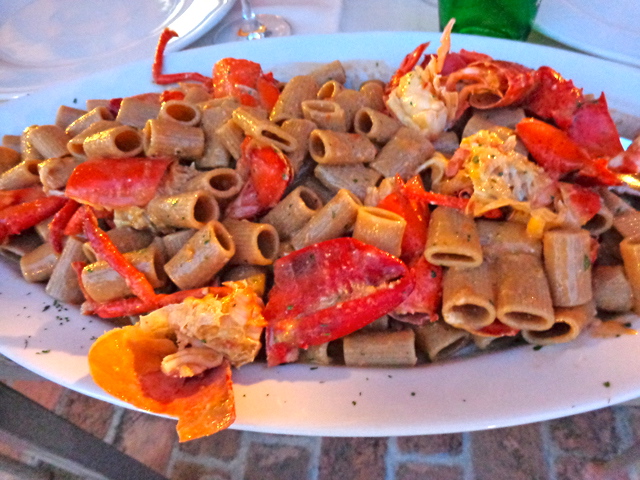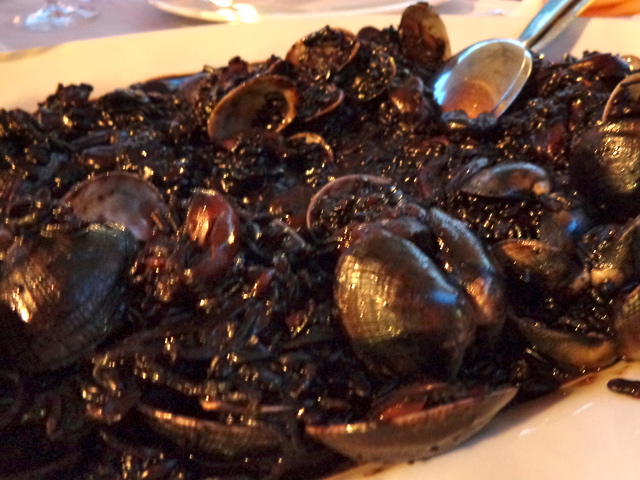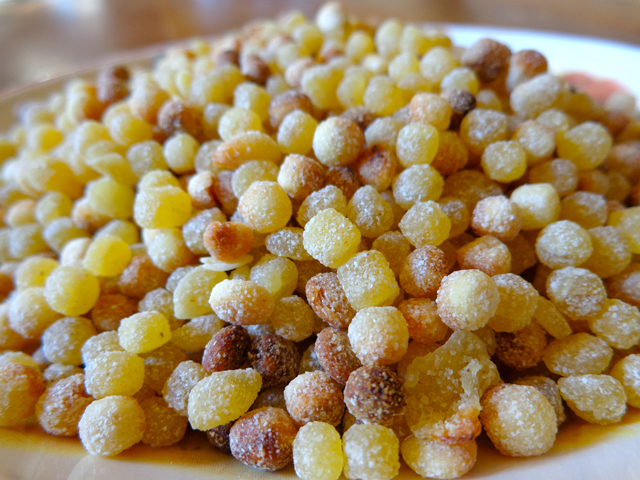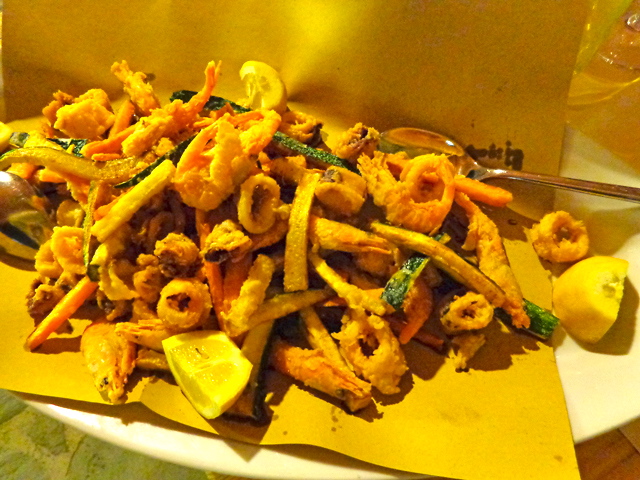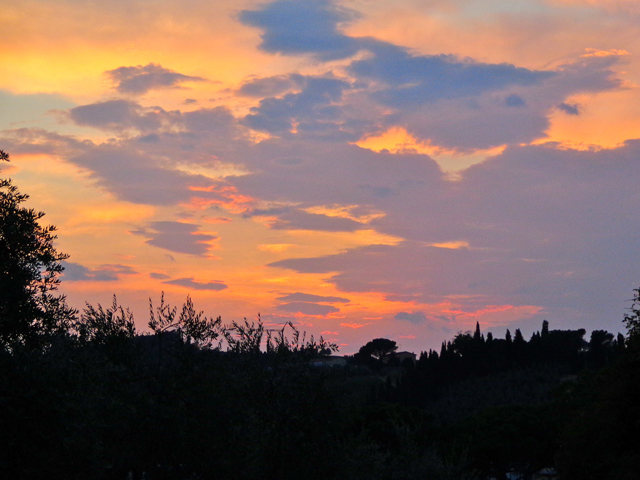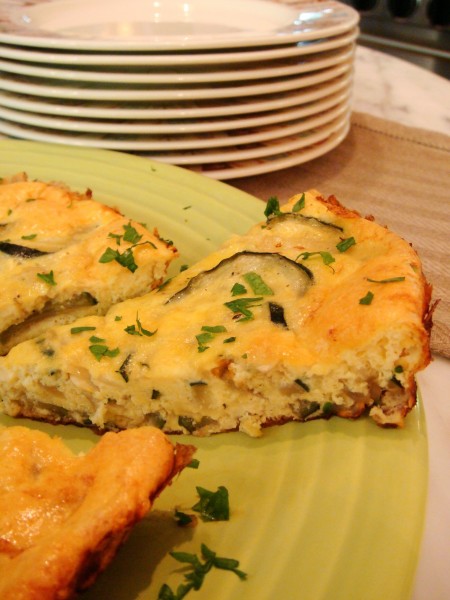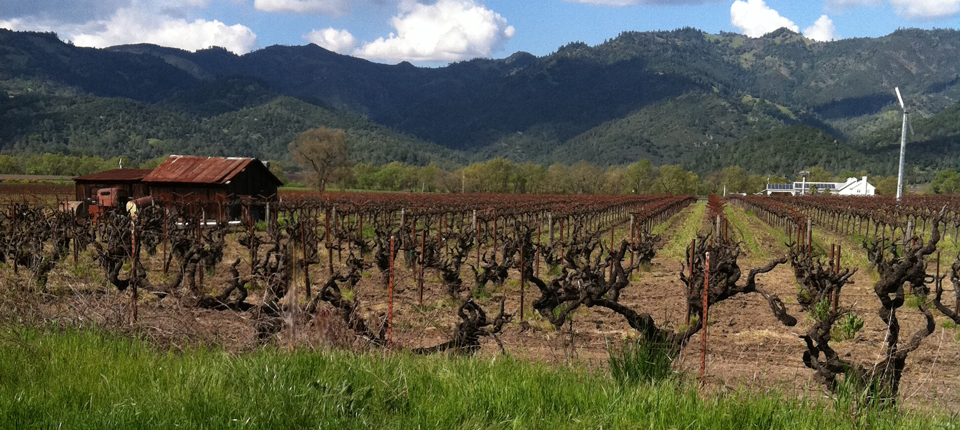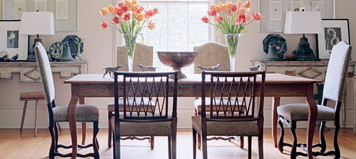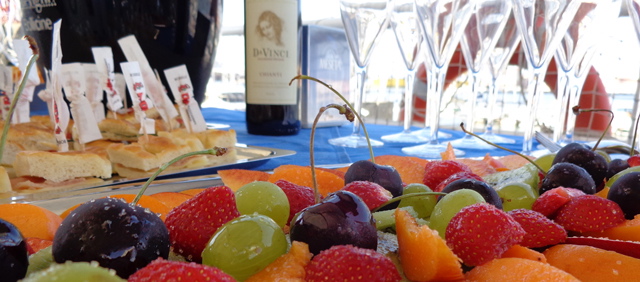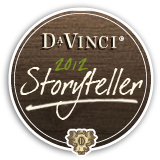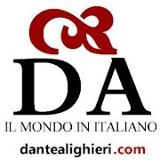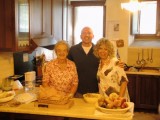An Italian Adventurer’s Journal
“Inspiration. Invention. Creation.”
The first thing I do when I come downstairs in the morning is head directly for the kitchen, even though the breakfast table in the dining room is fully set. Full of people, the kitchen is where the action is. Thalita’s mom Celia, who is visiting from Portugal, is usually in the kitchen along with Anna, Franco and Rossella (Anna’s assistant).
There are the usual greetings of “Buongiorno” and “Dormito bene?” However, Celia was in rare form this morning—full of energy and a barrage of questions. She speaks to me in Portuguese because she knows I understand a little Italian—of course, Portuguese is as much like Italian to me as Japanese is, but, there we stood, smiling, trying to work through our linguist challenges.
It took about 20 minutes of very deliberate dialogue for me to realize that Celia was asking me if I had a brownie recipe that I could give Thalita because Thalita really likes brownies. I guess Celia equates brownies with America. I realized, after our debacle of a conversation about a brownie recipe, if either Celia or I were to work at the U.N. as a translator, one of us would inadvertently start WWIII in trying to arrive at a brownie. Mamma mia!
When I came into the dining room, Jenna, Jade and Michelle were all there acting a bit odd. Twice I made my way around the table in filling my plate, making sure I hadn’t missed any of the table’s offerings, and, with each time around, the girls snickered.
“Is everything all right?” I asked.
“Sure it is.” “Of course.” “Yep.”
Jenna pulled her camera out, so I stepped to the side to get out of her way. I thought she was trying to take a photo of the table.
“Oh, I’m sorry. Go ahead,” I said, taking a big step back from the table before sitting down to join them at another table.
“Oh no, it’s fine,” she said, putting her camera down as if someone had let the air out of her tires.
We sat there a good long time … long enough for me to clean my plate and go back for seconds. As I got up this time, I could feel the air in the room change and when I turned around, the women were all leaning forward as if this was Christmas morning or something.
“Are you guys all right?” I asked. As I turned back around to fill my plate, I saw a huge tub of Nutella with a toothpick flag taped to it which read, “FOR MARK.” It seems my slathering of the addictive hazelnut spread on the pizza last night made quite an impression. [Click HERE to revisit that video]
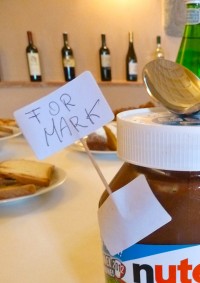 “We wondered when you were going to notice it!” the girls said, almost in unison. Two trips around the table and I missed the most obvious thing! Had it been a snake … well, ouch!
“We wondered when you were going to notice it!” the girls said, almost in unison. Two trips around the table and I missed the most obvious thing! Had it been a snake … well, ouch!
We all erupted into laughter and cheers. I was laughing so hard that I started to cry. Franco and Anna came out of the kitchen to see what the commotion was about—as if they didn’t know (Franco was the mastermind of flagging the Nutella). We all had a good laugh at my expense. Sometimes I am a little behind the curve.
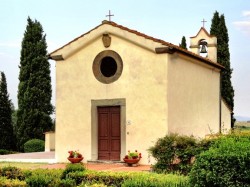 Franco opened the chapel for us. I find tiny chapels fascinating. I can trace my fascination back to where I grew up in the farm country of northern Illinois. There was a little chapel at the edge of a cornfield on the corner of a somewhat busy intersection. German immigrants built the chapel in the late 1800s. During my childhood, it was rarely open, but when it was, I enjoyed going in to appreciate its simple beauty. On that busy corner it stood as a constant reminder of a simpler, more hands-on working life that is now in complete juxtaposition to the constant, modern traffic it overlooks.
Franco opened the chapel for us. I find tiny chapels fascinating. I can trace my fascination back to where I grew up in the farm country of northern Illinois. There was a little chapel at the edge of a cornfield on the corner of a somewhat busy intersection. German immigrants built the chapel in the late 1800s. During my childhood, it was rarely open, but when it was, I enjoyed going in to appreciate its simple beauty. On that busy corner it stood as a constant reminder of a simpler, more hands-on working life that is now in complete juxtaposition to the constant, modern traffic it overlooks.
The chapel at the Casale is a little larger and much better appointed than the one in my hometown—the Casale chapel even has a working bell!
The chapel was very well appointed inside, though the interior structure was rustic. Since the outside was stucco I assumed the inside would have been the same, but it wasn’t. The inside was exposed brick—varying in texture and color. It gave this hunting lodge chapel some “of the land” natural charm.
Dotted with pieces of antique furniture (several leather upholstered chairs, campaign chairs and a pair of prie deu (kneelers), upholstered for comfort), linens on the altar and some standing candelabra converted into electric lamps, the chapel looked like it was ready for a Bishop-led service for the lord of the manor, rather than a preaching to the in-need-of-soul-saving peasants. Mary’s heavenly gaze in the Pietà hanging behind the altar, forced you, yourself, to look upward—here to see the hand-hewn, heavy timber-beamed and terracotta tiled ceiling that is classic Italian construction.
But what was more alluring was the sacristy (the room behind the altar). Here the space, usually reserved for a priest to prepare the communion sacraments and to hang his vestments, was much more monastic than the chapel.
Cracked, white stucco walls held a series of framed Stations of the Cross images, under which stood a long, nondescript bench. In the center of the room was a table, laid out with vestments and a candelabra. Here I could imagine someone finding a moment of respite from the day’s dilemmas to contemplate, to gather one’s thoughts, to look out the window over the vineyard and survey creation. Not only the creation of life and being, but also the creation of wine, which culturally in Italy seems to be elevated from a beverage to a food—something that gives you sustenance and fortitude.
I could have spent an hour here in the chapel, trying to collect my whirlwind of thoughts and emotions of the past couple of days in Italy, but alas, my life was scheduled to be another busy, busy day here in Vinci.
But before moving on, here is a little video tour of the chapel~
[Subscribers, please click HERE to view the video from your e-mail.]
Today, Claudia—another Cantine Leonardo da Vinci employee with a happy personality; are there no curmudgeons here or does working at a winery only attract people with a great vibe? But I digress— Claudia met us at the house and took us down to the Cantine to meet Riccardo, who is in charge of the blending process for DaVinci. He gave us a tour of the facilities.
[Subscribers, click HERE to view the “Welcome” video from your e-mail.]
Before modern technology, I can only imagine how difficult and labor intensive it must have been to produce wine. With all of the advances, it is now easier to produce a more consistent tasting wine and a more sanitary one.
Wine is a living thing. Grapes are fermenting and the sugars are turning into alcohol. Before modern facilities of stainless steel equipment and pipes and hoses transferred the wine along each step of the way, there were many opportunities for bacteria to be introduced into the process.
In fact, Riccardo was saying that there was a phase, about 30 years or 40 years ago, when wine producers added chemicals to their product to insure that the wine did not go bad and that bacteria was not allowed to develop. Eek, that sounds awful, doesn’t it?
However, today, given the technology, wine producers like DaVinci are producing a chemical-free, organic wine, which is more stable than it has ever been in the past. State-of-the-art technology combined with a long history of tradition and pride sounds like a win-win situation for all of us consumers.
The tour ended with us going into a wine blending class with Riccardo—who is responsible for the taste of the wine. His palate is not the only judge, but he is one of a very select group of people that decides how DaVinci’s wine will be blended to arrive at its taste in your glass.
You see, Chianti is a blend of grape varietals. DaVinci’s Chianti is made of 85% Sangiovese grapes, 10% Merlot grapes and then 5 % of other red varietals. And within those blends there are individually different tastes depending on each harvested lot of grapes.
Riccardo explained to us that with over 200 growers, each lot of grapes that comes in produces a slightly different tasting wine. Once the grapes ferment, and before they are bottled, it is up to Riccardo and his team to taste the lots in the barrels and blend the various lots to come up with the best tasting Chianti possible.
And this blending is not completed with finished wines. It is completed while the wines are still “raw”—unfiltered and unstabilized. Filtration and stabilization help to control the flavor, but wine continues to mature once it is in the bottle. Sitting in the bottle is actually an important part of the wine making process, too.
Riccardo is at the part of the process where inspiration (the taste of the lots) leads to invention (the blending of the lots) which leads to creation (the wine that pours out of the bottle into your glass).
There are a lot of small steps along the way that add up to one large flavor by the end of a wine’s creation. Much like a small family-run microbrewery, DaVinci wines are created by a select group of people that are very passionate about their work. The label may say DaVinci, but all of the people I have met so far consider DaVinci wine to be “their” wine—as if their family’s name was on the label. I am very impressed.
But back to the blending class—
Riccardo had us blend, on a small scale, our very own Chianti.
We were given seven samples to blend from: four which were 90% Sangiovese and three which were Merlot. All from the barrels downstairs and again, they had not been filtered or stabilized. As we tasted each one, Riccardo explained to us what he tasted—the types of flavors and aromas, the wines’ structures, and colors. Along the way, he also suggested which of the ones he thought we should not use in our blending—and why he thought we shouldn’t use them. He tasted the seven wines at the same moment we did. He had no pre-planned conception or forethought about these samples. We were having a collective moment of discovery and creation, as if we were his new team of taste experts.
Of the seven, he suggested we not use two. One of the Sangiovese wines was too peppery and one of the Merlots was too aggressive in flavor—a very prominent vanilla flavor. All of these outside “flavors and aromas” are developed by the interaction of the maturing wine with the oak barrels that the wines ferment in. Pepper and vanilla have not been added to the wine, it is just the natural reaction between the grape and the oak. Usually a cherry flavor or “note” is most common with Sangiovese grapes in oak barrels.
When you hear wine tasters discuss wine, they talk about “notes” of cherry, peaches, raspberries, tobacco, ash, vanilla, pepper, herbs, etc. With the wines that Riccardo suggested we not use, those “notes” were “chords!”—very present and bold flavors, which I actually tend to like, quite frankly.
Our task was to come up with a blend of these wine lots to arrive at “our” individual Chiantis. I couldn’t resist, I had to use some percentage of the ones that Riccardo suggested we not use. I like the flavor of pepper and vanilla, so I added a small amount of them into my blend. Why not be daring?!
[Subscribers, please click HERE to view the blending video from your e-mail.]
Above is a video clip of my wine tasting chart, with my notes and with my blend percentages. I don’t mind sharing—you are more than welcome to use my secret blend recipe the next time you are blending your next vintage of Chianti.
Riccardo personally prepared our blends to our specifications—10% of this, 45% of that, etc.
Next, he brought in one of his tasting colleagues, Roberto, to do the initial tasting. I think Riccardo did not want to be influenced by having known us for the last two hours.
Roberto tasted, then Riccardo tasted and then they both conferred. And their decision? Well, watch this video clip to see the “winner.”
[Subscribers, please click HERE to view the blending winner video from your e-mail.]
Yes, I won. Can you believe it? Pazzo! – Crazy! They said that mine was a great blend for the American palate—strong and assertive with a full-bodied flavor—exactly the type of red wine that I enjoy drinking.
So, am I now an expert? Not by a long shot. I still need someone to tell me what flavors can be tasted in each sample, if the sample has structure or body or a lack thereof, what the color means and on and on. I could only identify the pepper and the vanilla on my own, but once Riccardo started talking about cherries or flowers, then I could taste those “notes,” too—just as it was in the tasting with Filippo yesterday.
This was just the morning! Next we were off to a grower’s house for lunch.
We arrived at the wonderful home of Bruno Rossetti. Lunch was going to be served outside in their pavilion, which is between their house and a huge garage that has a catering kitchen in it. Bellissima!
When we arrived, Bruno was not yet there. Signora Rossetti, Bruno’s wife, who had prepared our lunch, greeted us. As we said our hellos, a grey 1963 Lancia sports car came pulling into the drive. It was Bruno with his niece and her fiancé. Bruno is a showman. He has a very gregarious personality and to me, he is a mix of bravado and charm—an Italian male through and through. I can only imagine him in his youth—a bit of a wild hare, a ladies’ man, with a warm but strong-armed, all-embracing ego.
While we waited for lunch to be assembled, Bruno had to have pictures of us with him in his car—I think he would have preferred not to have had me in the car with him. No doubt he would have been quite content to have let it be only himself and the ladies seated around him. He was a bit of a well-natured flirt and I completely understood, but there I was in the front passenger seat. I think we must have resembled a homecoming car in a parade—it certainly looked a little like 1963.
From there we took a walk through his garden to see, among other things, his tomatoes, artichokes, zucchini, peaches and plums. Italians are always proud to show off their gardens and many Italians have gardens. Here are some photos~
Lunch was light and I was happy for that. We started with ribollita—a very famous Tuscan soup which originated out of the cucina povera—the poor kitchen. Beans, two types of cabbage, tomatoes, potatoes, carrots, celery and garlic are made into a stew of sorts and then chunks of stale bread are added as an extender. The bread is cooked into the soup, hence the name ribollita –twice cooked– because the bread was “cooked” once when it was baked and is now “cooked” a second time when added to the soup.
This hearty mainstay of the fall Tuscan cuisine was followed by a ricotta tortino topped with freshly chopped tomatoes from Bruno’s garden, a zucchini frittata, and a rice salad with pickled vegetables, eggs, cubed ham and pecorino cheese. Dessert was slices of fresh cantaloupe and watermelon.
**At the bottom of this post you will find my recipe for a zucchini frittata—a perfect addition to any light lunch or brunch.
I spent my lunch seated next to Bruno’s niece and we had a wonderful time chatting. Luckily for me, her English is very good, though her fiancé did step in to save her every now and then. I needed someone to step in more than once to save me with my Italian. Though I may not be perfect, that does not stop me from trying. To learn is to make mistakes, correct those mistakes and then move onward and upward to learn and fail all over again.
The Rossetti’s took such great care of us and they once again demonstrated the heart and generosity of the Italian spirit. I do believe that Italy would give the American South a run for its money when it comes to hospitality of spirit.
From the Rossetti’s we went to the favorite local gelatoria for, what else— gelato! Mi piace di gelato molto! I ordered lampone –raspberry– and menta –mint. I feel somewhat behind in gelato consumption on this trip to Italy. This is day three and only my first gelato. Usually when I come to Italy, I have at least one gelato a day, if not more. Hmmm, I must try and make up for lost gelato!
Once again, when in Italy, ask the locals about their favorite gelatoria—Italians are a very generous people, always eager to share with you what they think is the best about where they live. In fact, it wouldn’t surprise me if the Italian you asked didn’t stop what they were doing and actually go right along with you, showing you the way and having gelato, too! Now, THAT is Italian!
Leonardo da Vinci’s house museum was next on the list. His house is outside of Vinci, up the side of a rising mountain. Surrounded by olive groves, it had glorious views of the olive trees shimmering silver-green in the mountain breeze.
The house was rather plain, though there is nothing wrong with that, and the biggest and pretty much only attraction to the home, other than being able to stand in the same place as Leonardo once did, is a hologram exhibit of Leonardo, the Renaissance Master. Sadly, it was not operational that day. Hmm, ironically, even the Renaissance Master suffers the ills of modern technology. Today, “sorry, the computer is down” tends to be the excuse. I wonder if in Leonardo’s day it was “sorry, the ox is down.”
The town of Vinci is quaint and much smaller than I imagined. The da Vinci museum is inside a great old building which contains, besides an incredible exhibit, a staircase leading up to a belltower with a great 360-degree view of Vinci and the surrounding countryside. [Note: the “da Vinci” is not really Leonardo’s real last name. “Da Vinci” in Italian means, “from Vinci,” so his name means “Leonardo of Vinci.”
What makes the museum so incredible is that many of Leonardo’s designs have been realized in miniature model form. At this museum you can see models of his machines categorized as “Water,” “Earth,” “Air,” “Fire,” and “Mechanisms.” Plus there are exhibits detailing his most famous paintings—and there are a lot of famous paintings.
It is hard to imagine how one’s mind can be free enough of the trappings of everyday life to think, not only out of the box, but centuries beyond the box. I guess that is the true declaration of a genius—to be intrigued enough by life to have the inspiration and gumption to create and to have thoughts that are so advanced that they go beyond mere knowledge and tap into what, on some level, I can only call “the divine.” Define that as you will—or maybe you think that “madness.”
Is it madness to have the imagination of will, like Icarus, to fly too close to the sun or invent electricity or the telephone or envision a means of flight—or to plant a field of vines, nurture them to produce fruit, harvest that fruit, distill and bottle it, and then serve to the world as wine? There is the genius of Leonardo, Edison, Einstein and then there is the everyday genius we invest our souls into, maybe not as life altering as electricity, but still altering enough to electrify our lives and the lives of those around us.
Here is some visual “flavor” of Vinci~
Dinner tonight was at the appropriately named dalleVigne –From the Vineyards– Wine Loft, a ristorante on the Cantine’s property. Yes, another lovely walk down through the vineyard to go to dinner. I cannot get enough of staying in the middle of this vineyard and, once the renovations are completed here at the Casale, I hope you won’t be able to get enough of staying here, either.
Chef Fabrizio Gaviano was going to treat us to some of his favorite dishes from Sardinia—the second largest island off of Italy’s western coast. Though Sardinia is a part of Italy, Chef Fabrizio was quick to point out that he is not from Italy but from Sardinia. I have a feeling the Sicilians feel the same way about their island home, too!
Being from Sardinia, our meal was going to be all seafood. I realize that the idea of being served seafood with heads, tails, eyes, claws, antennae and shells might be rough for most Americans, I hope you will realize the beauty of why it is done that way.
If you want to know if a fish is fresh, you must be able to look it in the eye. Clear eyes, fresh fish—cloudy or murky eyes, go for the steak! Once the head is gone, you have ostensibly removed the “Freshness Date” or “Use by this Date” label. We get told all the time here in the States to “smell the fish, if it smells fishy then it is old.” Well, quite frankly, once headless previously frozen fish go into a fish case, everything smells like fish. One old piece of fish can ruin 100 pieces of fresh. Everything out of a supermarket fish case smells like fish to me, regardless of how fresh it is. We haven’t made it easy on ourselves by culturally being put-off by heads and tails on fish.
Also, when you order fish in an Italian restaurant, they bring you the raw fish on a plate for you to get a good view of your dinner selection’s freshness. In fact, if you can’t make up your mind about which fish you’d like to have for dinner, your waiter will bring you a platter with a choice of several different fish. Maybe the Spigola doesn’t look as fresh as the Orata, either way, it is always best to see the whole fish.
Chef Fabrizio started us off with gli antipasti del Pescatore – a selection of three fish salad appetizers.
And the first one was polpo –octopus– one of my favorites. It was actually going to be a carpaccio di polpo – thinly sliced octopus which had been cooked, pressed and then sliced almost paper thin before being dressed with a lemon and extra virgin olive oil vinaigrette. It always reminds me of summer—so refreshing.
The second antipasti was steamed shrimp served on a bed of this crunchy vegetable with almost a smoky, anise, tobacco, or soy flavor (without the brown color). I know when I say tobacco, you are thinking cigarettes, but this “smoke” was earthy and not a wood-smoke. All of us at the table were puzzled by what this was, we just couldn’t figure it out—and we all loved it! My first question to Chef Fabrizio, “What was the vegetable salad under the shrimp and what was the sauce?”
“Sedano rapa.”
“Celery, what?” I asked, disbelievingly, because this was no celery I had ever tasted and yet I know the Italian word for “celery” is “sedano.”
“Yes, it is the ball,” Chef replied and continued, “Celeriac, I think.” And he reached over to the counter and picked up this brain-looking, knot of a thing.
“Oh, celery root.”
“Sì, sì, sì. Celery root.”
I do know that celeriac is the other name people use for celery root, but I must admit, I think I have only eaten it a couple of times in my life. As you can see, it is not the most attractive thing. It is one of those weird things that you occasionally see in the produce section of the market and remember “Oh, right. Celery root. I wonder what I can do with that?” as you walk by to pick up something more familiar. Sometimes we should be more adventuresome and try the unfamiliar!
“How do you prepare this? It tastes like there is some kind of Asian flavor in here,” I said to Chef Fabrizio.
“No, no, no. We marinate it overnight in just lemon juice, olive oil and salt.”
“That’s it?”
“That’s it.”
“Wow! Well it was amazing and you had all of us at the table talking about it, trying to guess how you prepared this amazing thing!”
“Thank you. It is very simple, like the cooking of Sardinia.”
“And Italy, “ I chimed in.
“Yes, and Italy, too, ” wryly smiling out of the corner of his mouth.
The last of the antipasti trio was pickled sliced onions topped with fresh alici –anchovies. Now before you sit there and say, “Ewwww, anchovies,” please know that I think they have gotten a bad rap in America. I mean, have you ever truly eaten an anchovy? And, if you have, have you eaten a fresh one?
I used to be like you, but after going to Italy, I have been converted. One of my favorite pizzas is zucchini blossoms and anchovies. Fantastico! There the alici (pronounced “ah- LEE-she” or “ah-LEE-chee,” depending on your Italian accent.) are salted and add a perfect salted note to the subtle flavors of the blossoms and fresh mozzarella cheese.
Our first pasta dish Mezzo Astice con Mezze Maniche Rigate –Half Lobster with Mezze Maniche Rigate– a popular whole wheat pasta from northern Italy that is usually only served with light summer fare, like seafood.
Chef Fabrizio was very excited to prepare our second pasta: Risotto Venere al Vongole e Calamari –Italian black, whole grain rice with clams and squid. It is not something you see every day on a menu. Given the color, you would think this dish was prepared with squid ink, but no. The color comes from rice itself, which needs to be par-boiled about 20 minutes before cooking with it further in a recipe. Venere is the Italian word for “Venus,” implying that this is rice for love.
Our third pasta was Fregola con Cozze. Fregola is a very particular round, multi-colored pearl-sized pasta that is very popular in Sardinia. Chef Fabrizio served it with mussels –cozze– a dish his mother used to prepare.
Our secondo –meat course– was a Fritto Misto –Fried Mix– of calamari (squid), gamberetti (shrimp) and strips of zucchine. This is a classic fried seafood combination, usually served as an appetizer, but tonight Chef Fabrizio suggested it as a main course since there were seven of us at dinner.
If you go to an Italian restaurant with a large group of people, the restaurant staff will almost automatically suggest that you order family style—usually meaning 2 or 3 dishes per course that can be easily shared. And Italian clientele like the idea, too. It is hard on the kitchen to serve a large party 8 individual dishes per course, since the kitchen doesn’t start to prepare your next course until the course your eating is finished and removed from the table. This gives you time between courses to relax, drink, and enjoy the company of your friends—and it ensures that your next course will be served freshly prepared.
I had the opportunity to go into the very tiny kitchen with Chef Fabrizio and his staff. If you have ever wondered what it is like inside a bustling kitchen, and this was a SMALL kitchen, here is some footage of my time in his fast-paced kitchen as our dishes were being prepared~
[Subscribers, please click HERE to watch the Chef Fabrizio video from your e-mail.]
After dinner we enjoyed the beautiful Tuscan sunset from our outdoor dining table. When in Italy in the summer, always dine outside—bellissima, no?
I laid in bed rethinking the day’s events, trying to imagine how I could express to you in a sentence what I learned and, as I closed my eyes, this thought came to mind—
“Vinci is a place of honest work, simple beauty, where inventive genius creates the future by building upon the past.”
Buon Appetito~
Mark
*Zucchini and Onion Frittata recipe~
Zucchini and Onion Frittata
Frittata con Zucchine e Cipolla
Zucchini, like most squash, has a high water content. When shopping for this dish, choose small to medium-sized ones rather than one large zucchini, because larger they grow, the more water and less flavor they have.
2 tablespoons sunflower oil (extra virgin olive oil may be substituted)
1 small-medium onion, finely minced
1 clove garlic, finely minced
¾ cup water, divided
3 medium zucchini (about ¾ pound), sliced into ¼-inch rounds
½ teaspoon salt
¼ teaspoon freshly ground black pepper
6 eggs, beaten
½ cup freshly grated Parmigiano-Reggiano cheese
Heat the oil in a 10-inch nonstick skillet over medium heat. When the oil is hot, add the onion and garlic. Cook for one minute, stirring constantly. Add a ¼ cup of the water and cook for 2 to 3 minutes until the water has almost evaporated. Add another ¼ cup water and cook an additional 2 to 3 minutes until the water has, once again, almost evaporated. Stir in the zucchini rounds, salt, pepper and the remaining ¼ cup water. Lower the heat, cover and simmer, stirring occasionally, until the zucchini is soft, 10 to 12 minutes.
Meanwhile, beat the eggs in a medium bowl and stir in the Parmigiano-Reggiano.
When the zucchini is soft but still retains its shape, remove the cover, return the heat to medium and cook until the excess moisture has evaporated, 4 to 6 minutes. Stir in the beaten egg mixture, making sure the zucchini and onions are evenly distributed. Cook until the bottom of the frittata starts to lightly brown and the top begins to set up, 4 to 6 minutes. With a spatula, loosen the edges of the frittata from the sides of the pan and with a quick firm shake, flip the frittata over in one whole piece. Cook the second side 2 to 3 minutes, until the bottom is lightly browned.
Invert the finished frittata (or if inverting seems scary, you can slide the frittata) onto a serving plate, cut into wedges and serve warm or at room temperature.
Serves 8 as an appetizer, or 4 as an entrée.
